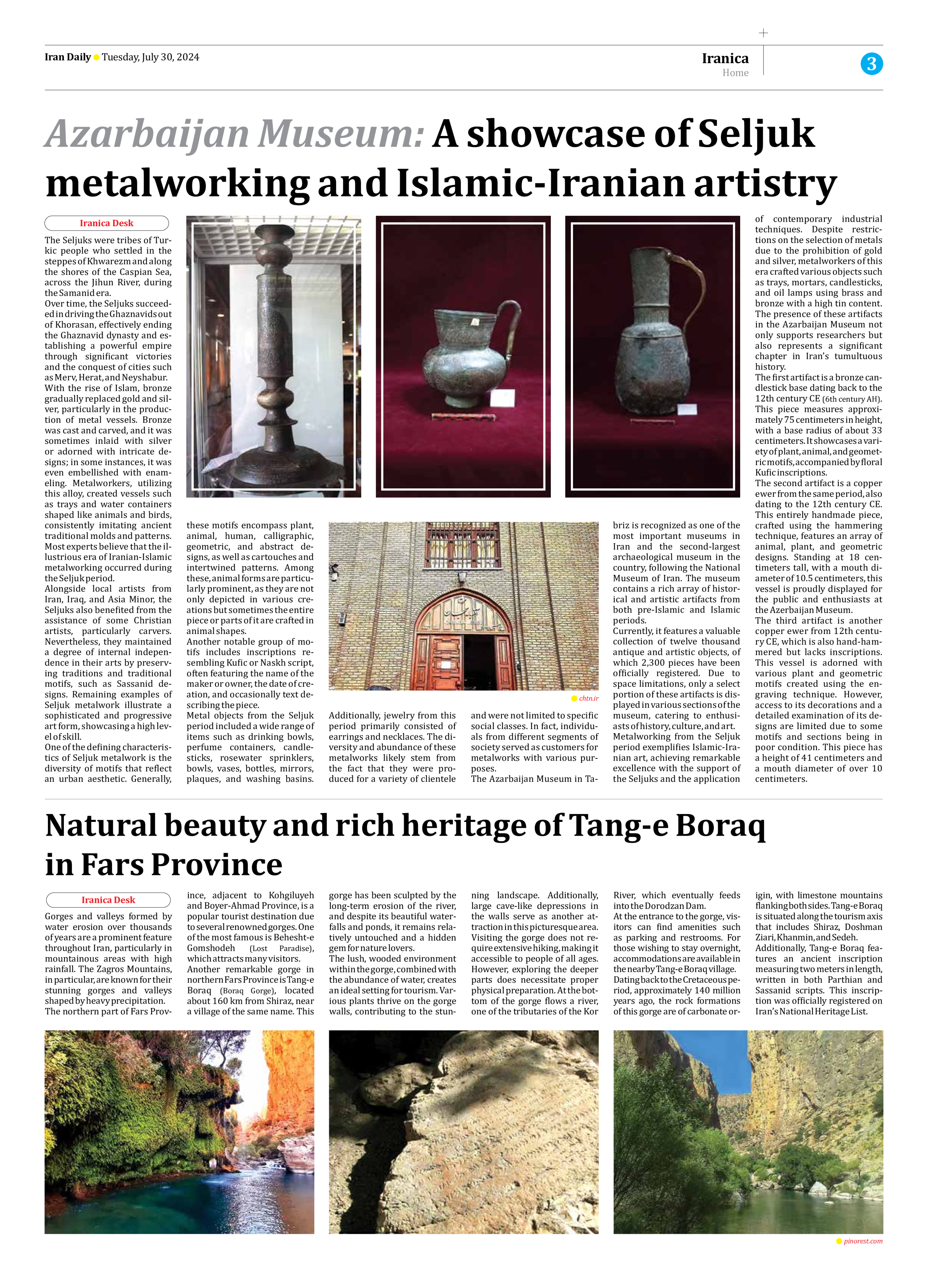
Natural beauty and rich heritage of Tang-e Boraq in Fars Province
Gorges and valleys formed by water erosion over thousands of years are a prominent feature throughout Iran, particularly in mountainous areas with high rainfall. The Zagros Mountains, in particular, are known for their stunning gorges and valleys shaped by heavy precipitation.
The northern part of Fars Province, adjacent to Kohgiluyeh and Boyer-Ahmad Province, is a popular tourist destination due to several renowned gorges. One of the most famous is Behesht-e Gomshodeh (Lost Paradise), which attracts many visitors.
Another remarkable gorge in northern Fars Province is Tang-e Boraq (Boraq Gorge), located about 160 km from Shiraz, near a village of the same name. This gorge has been sculpted by the long-term erosion of the river, and despite its beautiful waterfalls and ponds, it remains relatively untouched and a hidden gem for nature lovers.
The lush, wooded environment within the gorge, combined with the abundance of water, creates an ideal setting for tourism. Various plants thrive on the gorge walls, contributing to the stunning landscape. Additionally, large cave-like depressions in the walls serve as another attraction in this picturesque area.
Visiting the gorge does not require extensive hiking, making it accessible to people of all ages. However, exploring the deeper parts does necessitate proper physical preparation. At the bottom of the gorge flows a river, one of the tributaries of the Kor River, which eventually feeds into the Dorodzan Dam.
At the entrance to the gorge, visitors can find amenities such as parking and restrooms. For those wishing to stay overnight, accommodations are available in the nearby Tang-e Boraq village.
Dating back to the Cretaceous period, approximately 140 million years ago, the rock formations of this gorge are of carbonate origin, with limestone mountains flanking both sides. Tang-e Boraq is situated along the tourism axis that includes Shiraz, Doshman Ziari, Khanmin, and Sedeh.
Additionally, Tang-e Boraq features an ancient inscription measuring two meters in length, written in both Parthian and Sassanid scripts. This inscription was officially registered on Iran’s National Heritage List.







